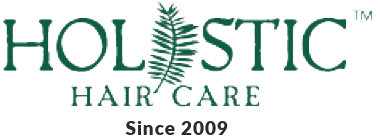{{ Interface.PageTitle }}
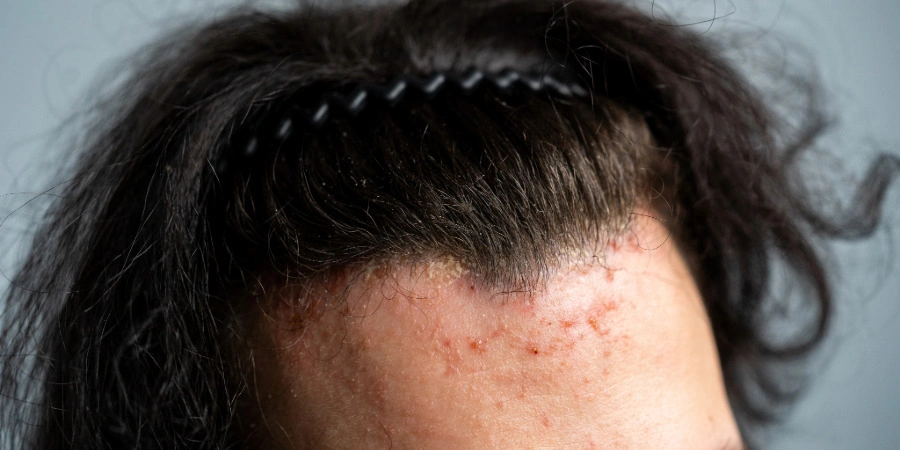
Dealing with painful bumps, redness, and irritation on your scalp can be both uncomfortable and embarrassing. Scalp acne affects thousands of people across Malaysia, causing not just physical discomfort but also impacting confidence and daily routines. Unlike regular acne on the face, scalp acne presents unique challenges due to hair coverage and different skin conditions on the scalp.
This comprehensive guide will help you understand everything about scalp acne, from its underlying causes to professional treatment options available right here in Kepong, Cheras, and Puchong. Whether you're experiencing mild irritation or severe breakouts, you'll discover practical solutions and expert insights to reclaim your scalp health.
What is Scalp Acne?
Scalp acne is a common skin condition that occurs when hair follicles on the scalp become clogged and infected. Unlike dandruff or dry scalp, scalp acne involves the formation of painful, inflamed bumps that can range from small whiteheads to larger, more severe cysts.
The scalp's unique environment creates perfect conditions for acne development. With numerous hair follicles, sebaceous glands, and constant exposure to hair products, sweat, and environmental pollutants, the scalp can easily become a breeding ground for the bacteria that cause acne breakouts.
This condition differs significantly from other scalp issues like seborrheic dermatitis or folliculitis, though they can sometimes occur together. Scalp acne specifically involves the same inflammatory process as facial acne but occurs within the hair-bearing areas of the head.
The condition can affect anyone, regardless of age or gender, though it's particularly common among teenagers and young adults due to hormonal fluctuations. However, many adults continue to experience scalp acne well into their 30s, 40s, and beyond.
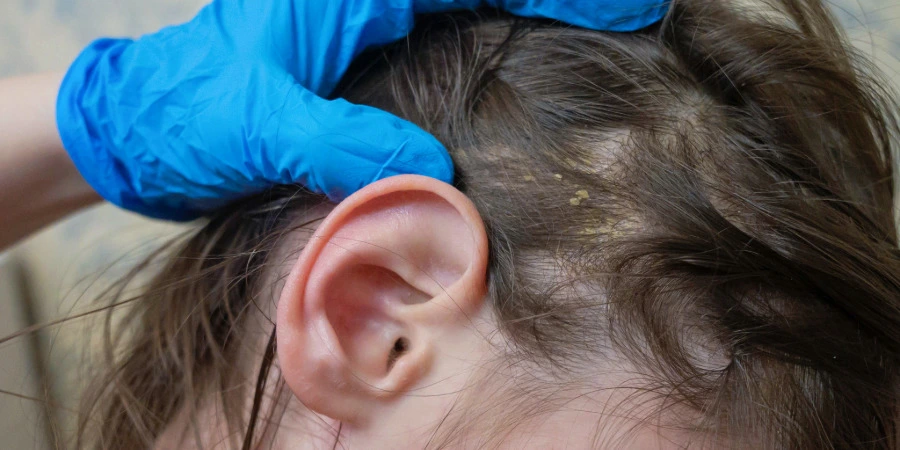
Signs and Symptoms
Recognizing scalp acne early can help prevent more severe breakouts and long-term complications. The condition typically begins with subtle changes that gradually become more noticeable.
- Early Warning Signs:
- Increased oiliness in specific areas of the scalp
- Small, tender bumps that feel painful to touch
- Mild itching or discomfort, especially when washing hair
- Areas where hair seems to be thinning or falling out more than usual
- Progressive Symptoms:
As scalp acne develops, you may notice swelling in affected areas, creating raised, inflamed patches that feel warm to the touch. Redness becomes more visible, particularly along the hairline and in areas where hair parts naturally. The itchiness and pain intensify, making it uncomfortable to brush, style, or even touch your hair. - When to Be Concerned:
If you experience severe pain that interferes with sleep, notice pus-filled lesions that seem to be spreading, or develop fever alongside scalp symptoms, it's time to seek professional help. Additionally, if over-the-counter treatments haven't provided relief after 4-6 weeks, professional intervention is recommended. - Self-Assessment Indicators:
Look for patterns in your breakouts. Do they occur in the same areas repeatedly? Are they triggered by specific hair products or activities? Do they worsen during times of stress or hormonal changes? Understanding these patterns can help hair care specialists develop more effective treatment plans.
Root Causes and Risk Factors
Understanding what triggers scalp acne is crucial for both treatment and prevention. The primary cause involves the overproduction of sebum, the natural oil produced by sebaceous glands in your hair follicles.
- Primary Causes:
When sebaceous glands produce excessive sebum, it combines with dead skin cells that naturally shed from the scalp. This mixture can clog hair follicles, creating an oxygen-free environment where bacteria thrive. The bacteria, primarily Propionibacterium acnes, multiply rapidly and cause infection, leading to the inflammatory response we recognize as acne. - Hormonal Factors:
Hormonal fluctuations significantly impact sebum production. During puberty, menstruation, pregnancy, or times of stress, hormone levels can trigger increased oil production, making breakouts more likely. This explains why many people notice their scalp acne worsens during certain times of the month or life stages. - Environmental Contributors:
Malaysia's hot, humid climate creates additional challenges for scalp health. High humidity can increase sweating, while frequent washing or over-washing can paradoxically stimulate more oil production. Hair products containing heavy oils, silicones, or comedogenic ingredients can also contribute to pore blockages. - Lifestyle Factors:
Poor diet, inadequate sleep, and high stress levels can all influence hormone balance and skin health. Additionally, wearing tight headwear, using dirty hair tools, or touching the scalp frequently can introduce bacteria and worsen existing breakouts.
Types of Scalp Acne
Scalp acne manifests in several different forms, each requiring specific approaches for effective treatment.
- Comedonal Acne:
This milder form includes blackheads and whiteheads on the scalp. Blackheads appear as small, dark spots where follicles are partially blocked, while whiteheads present as small, flesh-colored bumps with pus at the surface. These are often found along the hairline and in areas where hair products tend to accumulate. - Inflammatory Acne:
More severe than comedonal acne, this type involves red, swollen papules and pustules that are painful to touch. The inflammation occurs deeper in the follicle, making these breakouts more noticeable and uncomfortable. They often appear as clusters in specific areas of the scalp. - Cystic Acne:
The most severe form involves large, painful cysts that develop deep beneath the scalp surface. These can be particularly challenging because they're covered by hair, making them difficult to treat with topical solutions. Cystic scalp acne often requires professional intervention to prevent scarring and permanent hair damage. - Location-Specific Variations:
Hairline acne often results from hair product buildup and is typically easier to treat. Crown area breakouts may be related to hormonal factors and tend to be more persistent. Nape-of-neck acne often correlates with sweating and friction from clothing or hair accessories.
Diagnosis and Professional Assessment
Seeking professional help for scalp acne ensures accurate diagnosis and appropriate treatment recommendations. Hair care specialists at Holistic Hair Care are trained to distinguish between various scalp conditions and develop personalized treatment plans.
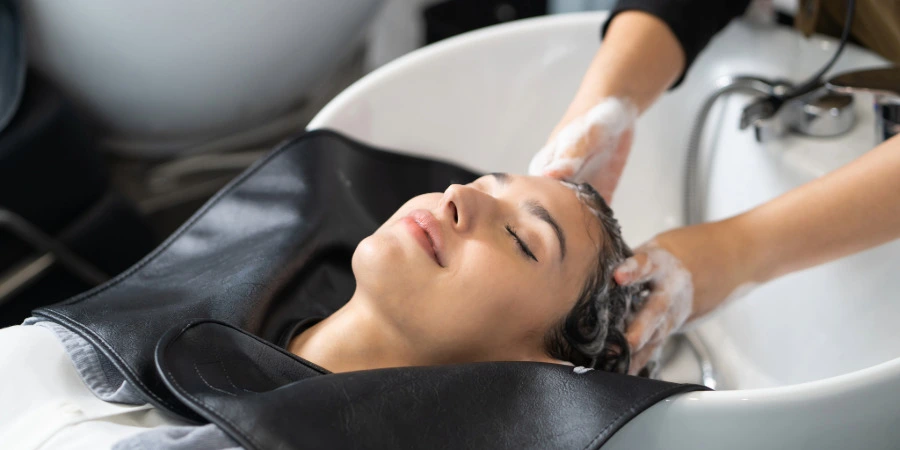
- When to Consult a Professional:
If your scalp acne persists despite consistent home care, causes significant pain or discomfort, or seems to be worsening over time, professional assessment is recommended. Additionally, if you notice hair loss in affected areas or develop signs of infection, prompt professional evaluation is crucial. - What to Expect During Consultation:
Hair care specialists will conduct a thorough scalp examination, often using specialized magnification tools to assess the severity and type of acne present. They'll review your hair care routine, product usage, lifestyle factors, and any patterns you've noticed in your breakouts. - Assessment Methods:
The evaluation process includes visual inspection of the entire scalp, assessment of hair and scalp health, discussion of symptoms and triggers, and review of previous treatments attempted. This comprehensive approach ensures that the recommended treatment plan addresses your specific needs and circumstances. - Questions to Ask Your Specialist:
Come prepared with questions about treatment options, expected timelines, product recommendations, and prevention strategies. Ask about the likelihood of scarring, how to modify your current hair care routine, and what signs might indicate improvement or the need for treatment adjustments.
Prevention Strategies
Preventing scalp acne is often more effective than treating existing breakouts. By implementing consistent preventive measures, you can significantly reduce the likelihood of developing scalp acne or prevent existing conditions from worsening.
- Hair Care Routine Adjustments:
Establish a gentle yet effective cleansing routine using products specifically formulated for acne-prone scalps. Wash your hair regularly but avoid over-washing, which can stimulate excess oil production. When shampooing, focus on the scalp rather than the hair lengths, and always rinse thoroughly to prevent product buildup. - Product Selection Guidelines:
Choose non-comedogenic hair products that won't clog pores. Avoid heavy oils, silicones, and sulfates that can contribute to buildup. Look for products containing salicylic acid or tea tree oil, which have natural antibacterial properties. Always read ingredient lists and patch-test new products before full application. - Lifestyle Modifications:
Maintain a balanced diet rich in antioxidants and omega-3 fatty acids while limiting processed foods and excess sugar. Stay hydrated to help your body naturally detoxify and maintain healthy skin.Manage stress through regular exercise, adequate sleep, and relaxation techniques, as stress directly impacts hormone levels and skin health. - Environmental Considerations:
In Malaysia's humid climate, consider using a dehumidifier in your bedroom and ensure good ventilation in bathrooms after showering. Change pillowcases regularly, clean hair tools frequently, and avoid touching your scalp unnecessarily throughout the day.
Treatment Options Overview
Effective scalp acne treatment often requires a multi-faceted approach combining professional treatments with consistent home care routines.
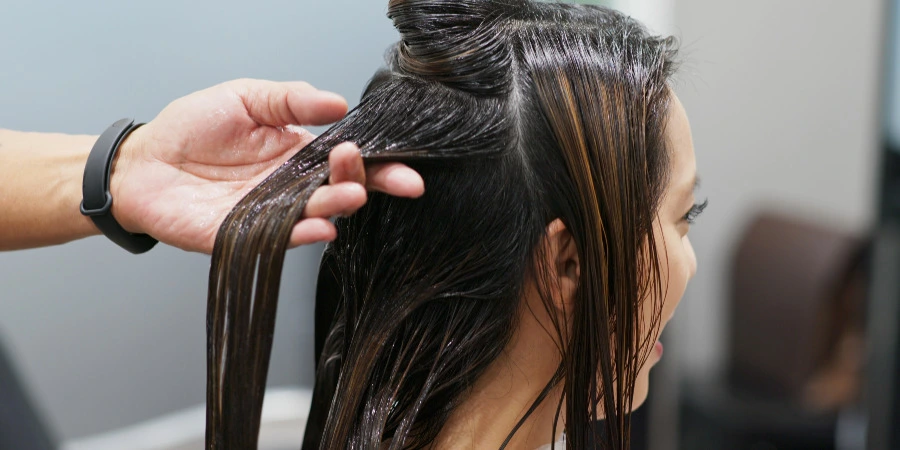
- Professional Treatment Approaches:
Check out our professional treatments → - At-Home Care Solutions:
Complement professional treatments with appropriate home care routines. Use gentle, pH-balanced cleansers specifically designed for acne-prone scalps. Consider incorporating scalp exfoliation once or twice weekly to remove dead skin cells and prevent pore blockages. - Combination Therapy Benefits:
The most successful treatment outcomes often result from combining professional treatments with consistent home care, lifestyle modifications, and ongoing monitoring by hair care specialists. This comprehensive approach addresses both immediate symptoms and underlying causes. - Treatment Customization:
Every individual's scalp condition is unique, requiring personalized treatment plans. Factors such as hair type, severity of acne, lifestyle, and personal preferences all influence the most appropriate treatment approach.
Living with Scalp Acne
Managing scalp acne effectively requires developing strategies that work with your lifestyle while promoting healing and preventing future breakouts.
- Daily Management Tips:
Start each day with a gentle scalp assessment to identify any new breakouts or changes in existing ones. Use a wide-toothed comb to minimize scalp irritation, and avoid tight hairstyles that can trap oil and bacteria against the scalp. When styling, use minimal product and focus application on hair lengths rather than the scalp. - Styling Suggestions:
Opt for loose, breathable hairstyles that allow air circulation around the scalp. Avoid heavy styling products, especially near the roots, and consider protective styles that keep hair away from the face and neck. When using heat styling tools, maintain a safe distance from the scalp to prevent irritation. - Confidence-Building Strategies:
Remember that scalp acne is a common, treatable condition that doesn't define you. Focus on the progress you're making rather than perfection, and celebrate small improvements. Consider speaking with others who have successfully managed similar conditions for support and encouragement. - Support and Resources:
Connect with hair care specialists who understand your condition and can provide ongoing guidance. Join online communities or support groups where you can share experiences and learn from others. Keep a journal tracking your symptoms, treatments, and triggers to better understand your condition.
When to Seek Professional Help
Recognizing when professional intervention is necessary can prevent complications and accelerate healing.
- Red Flags and Warning Signs:
Seek immediate professional help if you develop fever alongside scalp symptoms, notice rapidly spreading inflammation, experience severe pain that interferes with daily activities, or see signs of infection such as increased pus, red streaking, or swollen lymph nodes. - Choosing the Right Specialist:
Look for hair care specialists with specific experience treating scalp conditions. At Holistic Hair Care, our specialists in Kepong, Cheras, and Puchong have extensive training in scalp health and acne treatment. Consider factors such as location convenience, treatment philosophy, and available services when making your choice. - Treatment Expectations and Timelines:
Understand that scalp acne treatment is typically a gradual process requiring patience and consistency. Most people see initial improvements within 4-6 weeks of starting professional treatment, with significant results often visible after 3-4 months of consistent care. - Building a Treatment Partnership:
Work collaboratively with your hair care specialist to develop and adjust your treatment plan as needed. Maintain open communication about your progress, concerns, and any side effects you experience. Regular follow-up appointments ensure your treatment remains effective and appropriate for your changing needs.
Frequently Asked Questions

- Can scalp acne cause permanent hair loss?
While scalp acne can temporarily affect hair growth in inflamed areas, permanent hair loss is rare when the condition is properly treated. However, severe cystic acne or repeated picking at lesions can potentially damage hair follicles. Professional treatment helps minimize this risk and promotes healthy hair regrowth. - How long does it take to see improvement with professional treatment?
Most people notice initial improvements within 4-6 weeks of starting professional treatment. However, significant clearing typically takes 3-4 months of consistent care. The timeline varies based on severity, individual response to treatment, and adherence to the recommended care routine. - Is scalp acne contagious?
No, scalp acne is not contagious. While bacteria play a role in the inflammatory process, the condition cannot be transmitted through contact, sharing hair tools, or other means. However, sharing unwashed hair accessories or pillowcases isn't recommended for general hygiene reasons. - Can hair products cause scalp acne?
Yes, certain hair products can contribute to scalp acne development, particularly those containing heavy oils, comedogenic ingredients, or harsh chemicals. Products that aren't thoroughly rinsed from the scalp can also create buildup that clogs pores and promotes bacterial growth. - Should I wash my hair more frequently if I have scalp acne?
Not necessarily. Over-washing can actually stimulate increased oil production and irritate already inflamed skin. Most people with scalp acne benefit from washing 3-4 times per week with appropriate products, though individual needs may vary based on hair type and lifestyle factors. - Can diet affect scalp acne?
While research on diet and scalp acne is limited, some people find that reducing dairy intake, limiting processed foods, and maintaining stable blood sugar levels helps improve their skin overall. A balanced diet rich in antioxidants and omega-3 fatty acids supports general skin health. - Is it safe to color or chemically treat hair with scalp acne?
Chemical treatments should generally be avoided during active acne breakouts, as they can cause additional irritation and inflammation. Once your scalp condition is well-controlled, discuss timing and product selection with your hair care specialist to minimize risk. - What's the difference between scalp acne and other scalp conditions?
Scalp acne specifically involves inflamed, infected hair follicles that form bumps similar to facial acne. This differs from dandruff (flaky, itchy scalp without inflammation), seborrheic dermatitis (yellowish, greasy scales), or simple dry scalp (flaking without inflammation or bumps).
Conclusion
Scalp acne may be challenging, but it's entirely manageable with the right approach and professional guidance. Understanding the condition's causes, recognizing early symptoms, and implementing appropriate prevention strategies can significantly improve your scalp health and overall quality of life.
The key to successful scalp acne management lies in consistency, patience, and working with experienced hair care specialists who understand your unique needs. Professional treatment combined with proper home care creates the optimal environment for healing and long-term scalp health.
Don't let scalp acne control your confidence or daily routine. Take the first step toward healthier scalp by scheduling a consultation with our experienced hair care specialists at Holistic Hair Care. With convenient locations in Kepong, Cheras, and Puchong, professional help is closer than you think.
Your journey to clearer, healthier scalp starts with a single decision to seek professional care. Contact Holistic Hair Care today to book your comprehensive scalp assessment and discover personalized solutions that work for your lifestyle and needs.
